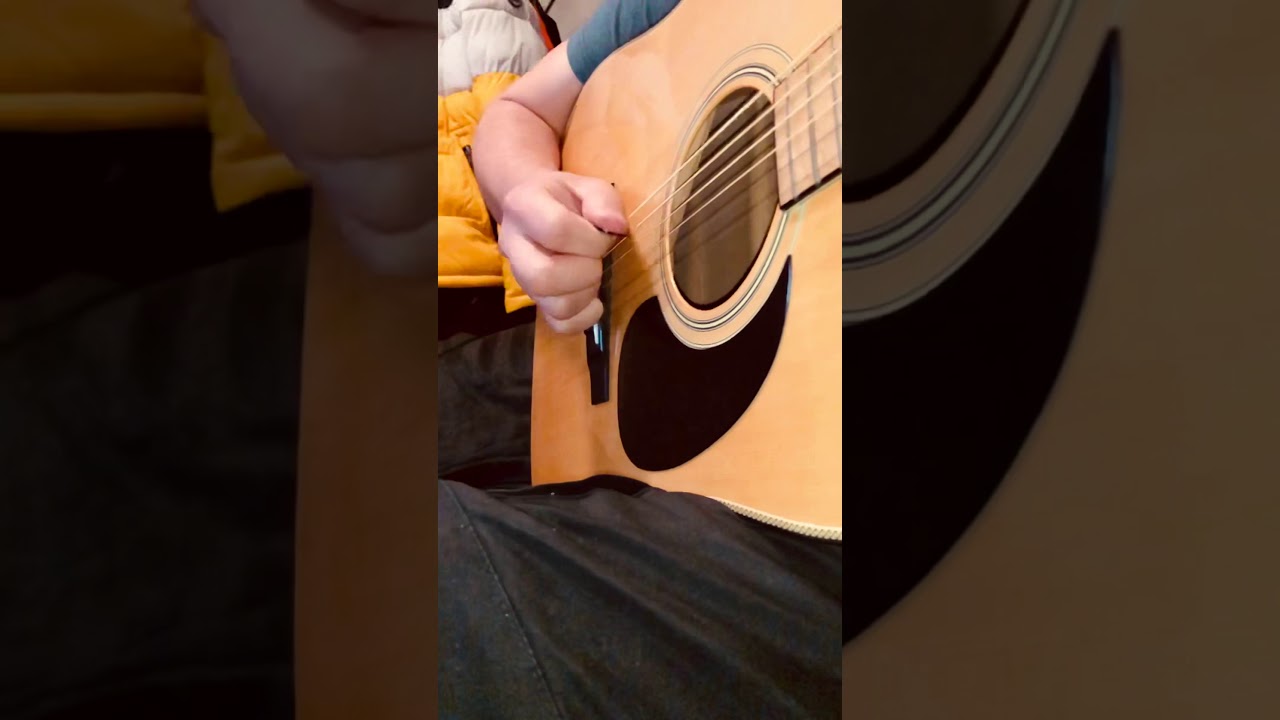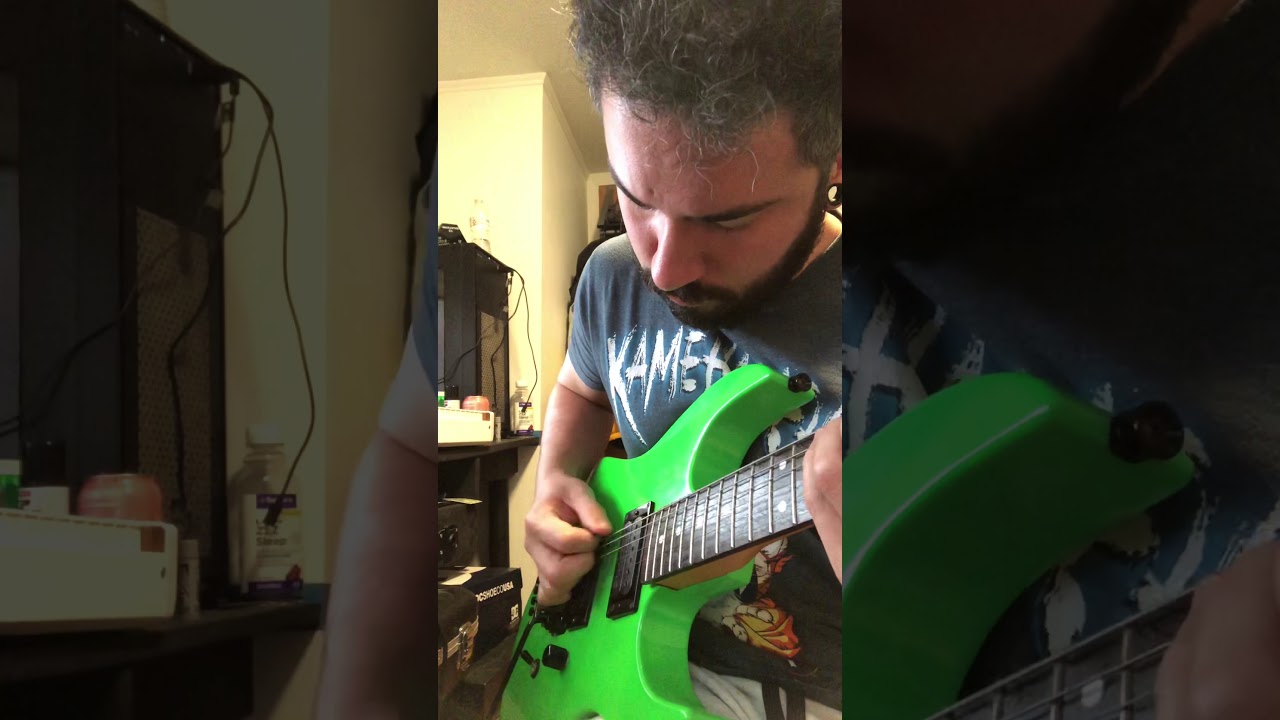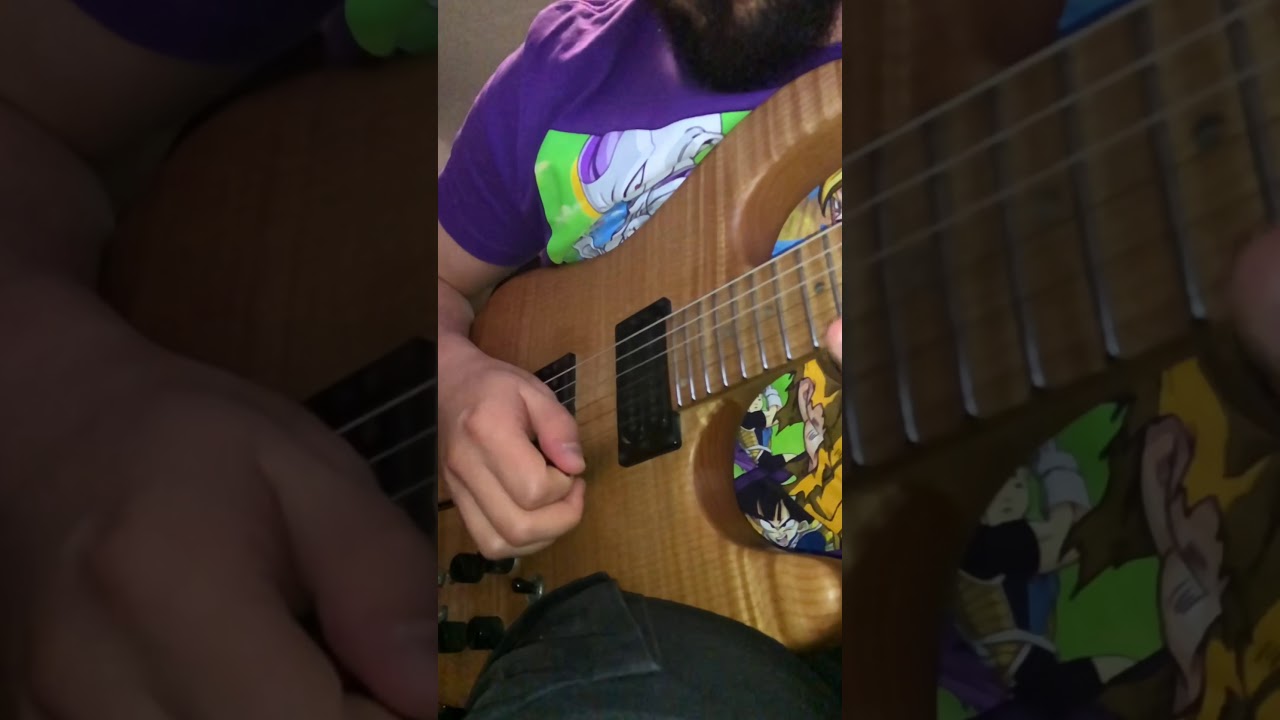Hey Guys! Sorry for being so late with my updates lately. I’ll be posting more so I hope not to annoy anyone. Anyways I’ve been rewiring my brain lately because I realized that it’s too inconsistent for me to have an upward dominant hand position when I play a lot of stuff that requires a downward hand position(Tech Death, etc, anything with a lot of palm muting). Thusly I’ve decided to really focus on downstroke escapes utilizing the wrist and wrist forearm rotation. Upon analysis of this video it looks to be more like Andy Woods wrist mechanic than the Wrist/Forearm Rotational variation where one uses a Throttle Revving sort of movement to get the desired U shape. That being said I DID utilized that to exaggerate the 10-2 motion required for the type of downstroke escape I really need for what I want top do. So if you’re struggling as much as I was and still feel I am with this stuff(YEARS OF EMOTIONAL PAIN) than I highly suggest exaggerating your downstroke escape for a good while. It really helps. Now the questions is how do I build speed. I didn’t measure the speed in these clips but I can do this comfortably at about 180bpm-190bpm 1/8th notes. Which isn’t melting but is still musical. I’m familiar with the idea of just going for it and letting it be sloppy, but sometimes when I do that I start unintentionally engaging joints and movements that are not wanted or needed. Any tips on building speed without compromising the technique and falling into old/building new bad habits?
Hey @RobertFlores!
Based on our current understanding, the only way forward is to just try and play fast - no way around it.
You can expect to be very sloppy at first if the new speed is outside your comfort zone, and this is very unsettling for most guitarists who have been trained to “not bump up the tempo until you make zero mistakes” (myself included). But in time you will be able to clean things up.
As a reference time for you, I would try to bump up the tempo significantly and try these rolls at 130bpm 16th notes or even higher. At that speed you won’t be able to get away with inefficiencies.
Slow practice is just not a good test for correct technique. but don’t take my word for it - here is one of my favourite quotes on the matter (video should start around 3mins):
PS: if next time you post both the normal speed and the slow motion video it will be easier to provide useful critique. Normal speed is good to judge the overall smoothnes and sound quality of the technique, while slow motions gives us info about the finer points such as picking trajectories and whatnot 
Non slowmo at 162bpm trips. Sloppyish, but still able to control. I understand all the jumping up to high speeds stuff. But it doesn’t totally work unless you dial in the movements at slower speeds where you can actually control the movements. I Like Martin Millers approach. Where you play at the speed that it just begins to fall apart and live there for a while. My problem had been swiping unintentionally for a long time. The problem, which only I was able to realize, was that i’d pre adjust the pickslant way too early. Such as when alternate picking your standard 2nd inversion a minor arpeggio across strings 1, 2 and 3. I would rotate the wrist to an upward pickslant when approaching the E on the 3rd string than use some sort of elbow mechanic to strike the A on the 2nd string. This would result in a swipe into the 1st string on the C note. I was only able to correct this by slowing things way down and focusing on keeping a downward pickslant at all times where applicable and truly using 10-2 escape or some sort of forearm rotation on downstrokes. This methodology I would imagine will be particularly beneficial to those with a naturally upward pickslant. Not to say crosspicking cannot be achieved with the thumbside palm as the anchor, that way just makes it much more difficult to palm mute and thusly less desirable for me personally.
Hi Robert! Saw your YouTube comment.
To be honest, this is the exact opposite of what I’ve experienced. When I find myself stuck in the zone you’re in, where you’re at this medium speed where things look and feel awkward, I have always failed to think my way out of that. I understand the temptation of thinking, well, if I can just get this motion correct, then I can just speed it up while maintaining that correctness. But it has never worked for me.
Instead, the only thing that works for me is trying to go fast without fear of wrong notes. Whatever motion emerges when you do that, that’s the more mechanically correct motion. It won’t be 100% correct. But it will have the most important component of correctness which is smoothness and mechanical efficiency. What you do then is slow it down a tiny bit, * maintaining that efficiency *, and try to get a few more notes correct.
The term “grinding” in your YT comment jumped out at me. I’m always trying to make my playing time not feel like that. Instead, I like to be more in the zone of trying to do the BMX bike trick, and repeatedly trying to land it. I may make lots of attempts to get something, but they’re nmore like the kind of normal-speed attempts you do when trying to learn a wheelie or some other trick. Sometimes you ride for half the block. Other times you fall right down. When I’m in that normal speed or fast speed zone where I often miss the landing but sometimes totally nail it, that’s how I know I’m ready to make progress. If I’m in the zone where I’m playing slowly with correct notes for hours at a time, but not feeling like I’m getting any faster or smoother, that’s “grinding” to me and I don’t like that zone. It hasn’t workd for me.
So… I know I’m basically repeating @tommo’s advice, but this is it: give us some fast smooth sloppy motion on some phrase you’re working on. No metronome please. Let’s see what that looks like.
Wasn’t entirely clear to me what @RobertFlores is shooting for. But the following might help us both…
@Troy, would you qualify this by saying that you’d do what you’re describing if you were already within arm’s reach of the goal tempo - e.g. 85% or so - or no, you’d floor it even if the controlled, accurate playing of the lick was far from the goal, like 50-60%…? (I know this is taxing your memory; you may not have experienced the latter since way-back-when…)
I’m in the learning zone constantly, on electric guitar, acoustic guitar, mandolin. I was not a wrist player five years ago. At least not like I am now. It never ends, and any tip or trick I recommend here is something I’ve probably one recently or am doing right now.
As far as goal tempo — I start with the ability to play at the fast tempo, just like you did in your case study. You have a 180bpm motion now. You’ll probably get faster as you figure out what’s making the garage spikes happen, maybe tool around with your pick grip, or make more subconscious changes to your motion to find a faster motion, and so on. But that is generally where I begin. If it’s not fast and somewhat smooth, it’s not right so that’s where I start.
As you work on different kinds of phrases you will encounter things that feel unfamiliar, like different fretting patterns that confuse you. Or having to move across strings in unusual patterns. So there is still motor learning happening. These are all slightly different tweaks oh your core motion. So the same approach still applies. Do it fast, confirm that it is smooth / efficient, then slow down a tiny bit and see if you can get some more notes right. Play it fast again to test. Ping pong around. Get bored, put it down, come back later. And so on.
This is the general outline, I don’t really alter it. I don’t spend tons of time in this “slow and controlled” zone you’re speaking of, which I described as “grinding” above. If I’m going really slow, it’s only because the motion is pefect, I know I’ll be able to play the phrase, and I’m just memorizing the fretting or something. But I don’t tend to work on motions at super slow speeds because I can’t tell if the motions are correct when going that slow.
I hear. That helps. (I’d follow up, but I don’t want to hijack @RobertFlores’s thread, and I think it’s time for me to post a vid or two anyway.)
Hey Rob sorry for not addressing your reply earlier (and thanks @Troy for jumping in!).
In short the approach you say at the start you don’t want to do… is the approach we recommend 
That is: do some fast and sloppy attempts, where you kind of play the thing with maybe some swipes etc., then slow it down just a little (while remaining fairly fast) and try to clean it up.
shooting from the hip, I’d say the movement you show at 2:27, the “controlled” and slower one, is stringhoppy and unlikely to go faster than what you are demonstrating here.
Finally, it is a bit easier for us to work with text + short videos with only the playing example and no talking (usually 10-20 secs sufficient).
This way it’s easier to find the actual playing that needs analysing and other forummers can find the topic via the search function.
Thanks and great playing by the way 
Concur with @tommo. 2:27 will not speed up because it’s not an efficient motion. If you do manage to speed up, it would only be due to changing it to some other motion, consciously or otherwise. In which case again, it’s not really that motion any more.
Also, the motion at 30 seconds is awesome, and perfectly controlled. I don’t know what you mean by controlled, but to me it means memorized so that it perfectly fits the pattern you are trying to play, and can be started and stopped on a dime perfectly at all speeds with no errors. If, instead, by “control” you mean so slow that you can consciously consider and “think” about every note, well, that’s not effective for fast motion. Playing in that zone will make it impossible to know when your motions are correct or incorrect.
I can play at 162bpm triplets and have been able to prgessively speed up with the technique you’re both saying you can’t do that with lol. I played it slow here to explain what exactly the problemn was before(early forearm rotation). Haven’t been able to find any technique i can play straight up at 180bpm 16ths off the rip and have it be remotely close to correct in the past 5-6 years of trying to figure this out. Guess it’s back to the drawing board lol.
Like I said, if you can speed that up, it’s because whatever you’re doing at 160 isn’t the same as what you’re showing us here. We only know what you show us, and the example at 2:27 is very hoppy in appearance.
Also, are you saying that the 162 bpm motion can’t speed up to get to 180, or just that it gets sloppy when you do? If it can’t speed up, then there is still an efficiency issue. In general, efficient motions don’t really have a speed limit, they just gradually morph into faster motions that maybe don’t get all the notes right.
Sorry if I missed this, but have you shown us the 180 bpm sloppy attempt yet? What does that look like? Whatever that motion is sounds like it has potential.
Here’s 180 bpm super sloppy. I’ve always been able to do this. Problem is it doesn’t clean up and the swiping never goes away. I know a lot of greats swipe. I personally don’t want to or I’d at least like the choice. And I believe this comes from years of compensating by anchoring thumb side palm and not working on downstroke escapes properly. Which I don’t believe I can address at this tempo.
Ok gotcha thanks for posting this. You know what I think? I think the motion at 30 secs of the previous clip is the motion you want. It looks great. It’s effortless, fast.
There is no need to use an obviously forearm-oriented motion for 1nps type lines if you don’t want to. One of the nice things about wrist motion, which you’re already very good at, is that it can make both kinds of string changes with no involvement of the forearm joint or other alteration of your form.
That lick you’re playing at 30 seconds, is that swipey or are you clearing the strings on the way up and the way back? Because if so, that’s all you need, the ability to make downstroke and upstroke string changes. Then you take that motion and try to apply it to other phrases.
Everything I play at those speeds is swipey. That’s what is killing me. And I can’t seem to fix it at those tempos.
One thing that has helped me a bit when trying 1nps beyond what is remotely comfortable is to
Pick each note of the phrase 3 times (at the triplet equivalent of the fast tempo). This means that your fretting hand plays slower (but still in time), whilst your picking hand is still going full-tip and the string changes fall on the same pick direction as the normal lick would be. I find it allows me to focus on relaxing the picking hand and finding an efficient motion without it sounding like absolute garbage.
I don’t spend too long doing this - a hand full of reps and then try the normal lick again. I find that sometimes it helps.
I do feel your pain here as even though I do believe the gunning it method work - its hard to do without feeling like its a waste of time.
Let me know if the above doesnt make sense - I dont think I did a particularly good job at explaining it 
Here’s a slowmo of the technique that is supposedly good. Swipes all over the place. I also did some scalar runs with the same technique where I try to double cross gilbert lick style, but there’s major swiping. Sure itsounds okay, but it’s swiped and it doesn’t do anything for crosspicking and I also can’t make any adjustments to the technique at these tempos.
Thanks for the slow motion. I’m not really sure if I’m seeing the swiping here, but at this level of slow motion the video is a little murky. A more down-the-string angle might be clearer if you point the headstock a little more toward the camera lens. But don’t worry about that just yet.
I say I like this motion because it’s fluid. Mechanically speaking it is efficient. I assume it feels comfortable to you? I’m much more interested in fluid motions that are inaccurate than accurate ones that are awkward. The awkward ones don’t ever become fast and accurate in my experience, at least not without changing into some other motion.
Backing up for a second, can you play single escape lines without swiping using this motion? Which kind, upstroke escape or downstroke escape? It looks like downstroke escape to me. Is that much working cleanly?
It really depends on the lick. I’d say I swipe both ways and have some how managed to figure out how to mute well enough to make it sound alright. 2nps stuff works well because I can stay in the a downward orientation and the upstrokes escape. I’m trying to change my fundamental technique because the palm side anchor doesn’t allow me to mute when playing fast and also I still swipe at high speeds in that orientation anyway even if it sounds and looks okay. I think downstroke escapes are the problematic ones. I personally think that if something is new it is going to feel awkward whether it’s correct or incorrect. This way I’ve been picking multiple notes per string feels fine but I’m swiping. More moderate tempos where I can intentionally work on downstroke escapes don’t feel incorrect the just feel like the opposite of what my baked in swipey garbage does. I should say that when I’m using this old technique you’re seeing I and technically not using an esacpe. I’m upward pickslanting and basically trying to let that allow me to get over the string. Which is why I feel like I need to slow down a little because I can’t reprogram years of this at these speeds where this stuff is baked and automated.






